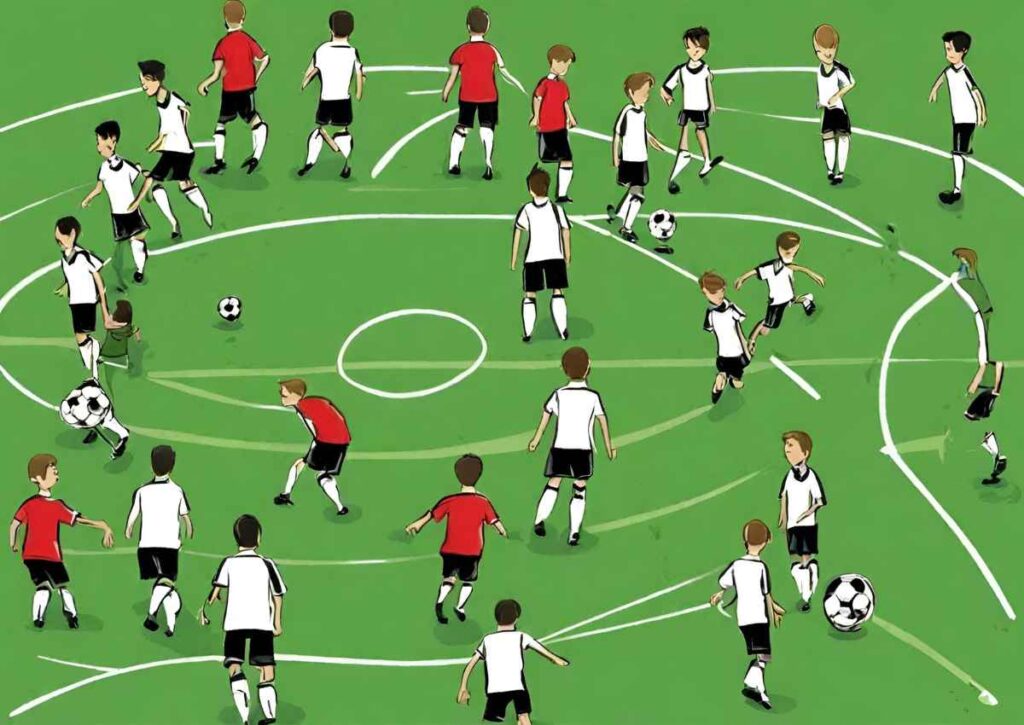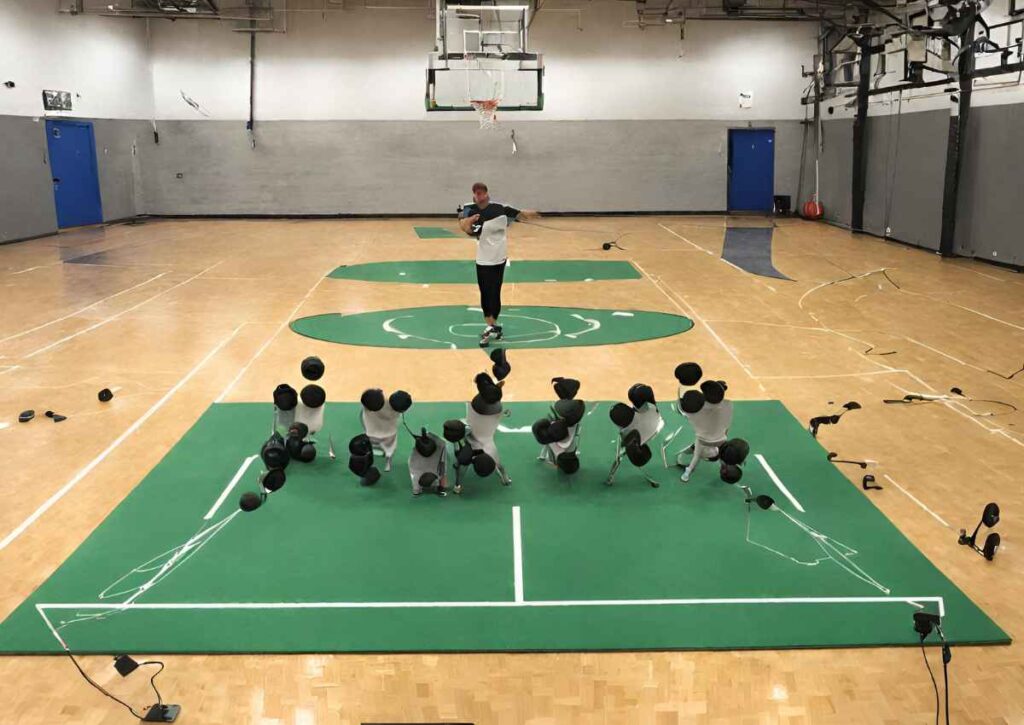Soccer, often described as the beautiful game, is a sport that requires a delicate balance of skill, strategy, and teamwork.
Among the many techniques and training methods utilized by players and coaches alike, “rondo drills” stand out as an essential tool for honing skills and improving performance on the field.
What exactly are soccer rondo drills, and why are they so crucial in the development of a soccer player’s abilities?
Let’s delve into the intricacies of this training method and explore how it can elevate your game to new heights.
Understanding Rondo Drills
Rondo drills, also known simply as “rondos,” are a series of training exercises designed to improve ball control, passing accuracy, and decision-making in tight spaces.
Originating from the Spanish term “rondos” meaning “rounds” or “circles,” these drills typically involve players forming a circle or square and passing the ball among themselves while attempting to keep possession from defenders positioned in the center.
Soccer Rondo Drills: Mastering Technique and Agility

Improving Technique
Rondo drills emphasize the importance of precision passing, first touch, and quick decision-making under pressure.
Players learn to control the ball effectively and execute accurate passes in confined spaces, replicating game-like scenarios.
Enhancing Spatial Awareness
By positioning players in a compact area, rondo drills encourage spatial awareness and intelligent movement off the ball.
Players must constantly scan their surroundings, anticipate passing lanes, and adjust their positioning to create passing options.
Developing Communication and Teamwork
Successful execution of rondo drills requires effective communication and teamwork among players.
Through constant verbal and non-verbal cues, teammates learn to work together harmoniously to maintain possession and penetrate the defensive lines.
Variations of Rondo Drills

One of the strengths of rondo drills lies in their versatility.
Coaches can tailor these exercises to focus on specific aspects of the game or adapt them to suit the skill levels and objectives of the players. Some common variations of rondo drills include:
Four vs. Two Rondo
In this variation, four attackers attempt to keep possession from two defenders in a small area. This drill emphasizes quick passing, movement, and decision-making to evade pressure and retain the ball.
Triangle Rondo
Players form a triangle and pass the ball among themselves while a defender attempts to intercept. This drill emphasizes angles of support, off-the-ball movement, and maintaining passing lanes.
Three-Touch Rondo
Players are limited to three touches before passing the ball, promoting quick decision-making and crisp ball control.
Directional Rondo
Players must pass the ball to specific zones or targets, adding an element of accuracy and precision to the drill.
Benefits of Incorporating Rondo Drills into Training

The incorporation of rondo drills into training sessions offers a multitude of benefits for players of all ages and skill levels:
Improved Ball Control
Rondo drills help players develop a soft touch, precise ball control, and the ability to manipulate the ball in tight spaces, essential skills for maintaining possession and evading defenders.
Enhanced Decision-Making
By placing players under pressure and forcing them to make split-second decisions, rondo drills enhance cognitive abilities and decision-making skills on the field.
Increased Fitness Levels
The intense and dynamic nature of rondo drills provides an effective cardiovascular workout, helping players improve their stamina, agility, and overall fitness levels.
Foster Creativity and Fluidity
Rondo drills encourage players to express themselves creatively through their movement and passing, fostering a fluid and dynamic style of play that is both effective and enjoyable to watch.
Conclusion
In conclusion, soccer rondo drills are a fundamental component of training for any aspiring soccer player.
By focusing on technique, spatial awareness, communication, and teamwork, these exercises provide a comprehensive platform for player development and improvement.
Whether you’re a beginner looking to master the basics or a seasoned professional striving for excellence, incorporating rondo drills into your training regimen can help elevate your game to new heights.
So grab a ball, gather your teammates, and get ready to embrace the beauty and complexity of soccer through the art of rondos.
FAQs
What equipment do I need to perform soccer rondo drills?
All you need is a soccer ball and a designated playing area, preferably with markers to define boundaries.
Cones or markers can be used to designate areas for players and defenders, but they are not strictly necessary.
Are soccer rondo drills suitable for players of all ages and skill levels?
Yes, rondo drills can be adapted to accommodate players of varying ages and skill levels.
Coaches can modify the size of the playing area, the number of players involved, and the complexity of the exercises to ensure they are suitable for everyone from youth players to professionals.
How often should I incorporate rondo drills into my training routine?
It’s recommended to incorporate rondo drills into your training routine regularly, ideally several times per week. Consistent practice is key to mastering the techniques and skills emphasized in rondo exercises.
Can rondo drills help improve my defensive skills as well?
While rondo drills primarily focus on ball control, passing, and offensive play, they can also indirectly improve defensive skills.
Defenders participating in rondo exercises learn to anticipate passing lanes, apply pressure strategically, and improve their positioning, all of which are essential defensive attributes.
How long should a typical rondo drill session last?
The duration of a rondo drill session can vary depending on factors such as the fitness level of the players, the intensity of the drills, and the objectives of the training session.
Generally, rondo drills can be performed for 15-30 minutes as part of a larger training session, but this can be adjusted as needed.
Can rondo drills be incorporated into individual training sessions, or are they primarily for team practice?
While rondo drills are often performed in a team setting, they can also be adapted for individual training sessions.
Solo players can practice passing against a wall or rebounder, incorporating elements of rondo drills such as ball control, passing accuracy, and quick decision-making.
Also Read
Florida Drill Rap: The Beat Of Miami Streets









